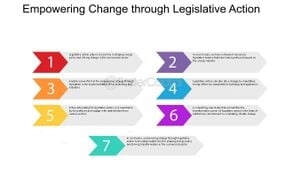The U.S. economy has demonstrated remarkable resilience, posting a solid growth rate of 2.8 percent for the third quarter of the year. This figure, released by the U.S. Bureau of Economic Analysis, reflects the country’s gradual rebound amid persistent inflationary pressures. While the current growth rate is slightly lower than the previous quarter's more exuberant 3 percent, it's fueled by key factors like increased consumer spending, rising exports, and substantial business investment.
One of the most significant contributors to this growth appears to be consumer behavior. Spending surged at an annual rate of 3.5 percent, marking its fastest pace since late last year. The uptick was particularly evident across various sectors, including bars, restaurants, and auto dealers, indicating heightened consumer confidence heading toward the end of the year. Tim Quinlan, an economist at Wells Fargo, commented, "The moderation in the pace of price growth is allowing consumers to ratchet up spending." This reflects the changing dynamics as consumers respond to stabilizing prices, particularly after many months of unease.
Exports also played their part, jumping 7.5 percent during the third quarter, the highest growth witnessed in two years. This positive trend signals not only domestic consumer confidence but also an optimistic outlook for U.S. goods on the international market. Nevertheless, the business investment sector did not fare as well. There were notable declines observed in housing and nonresidential structures which offset gains made through increased spending on equipment.
Despite the promising figures, many Americans continue to feel the squeeze of high prices on their everyday budgets. Inflation may have cooled significantly since reaching its peak of 9.1 percent last June, but prices remain about 20 percent higher than what they were at the start of 2021. Lorraine Thompson, a shopper from Secaucus, New Jersey, expressed her concerns about this saying, "Everything is high—the meat, the cheese." With the holiday shopping season upon us, this sentiment makes the upcoming spending trends all the more interesting.
Retail indicators are also presenting signs of growth, with retail sales rising by 0.4 percent in October as consumers prep for the busy holiday season. The National Retail Federation anticipates sales increases of between 2.5 percent and 3.5 percent during November and December compared to the previous year. Fundamental to this optimism are the encouraging signs of easing inflation, which is expected to bolster consumer spending during this peak sales period.
Looking ahead, the economic outlook seems cautiously hopeful. The Conference Board, for example, noted its consumer confidence index recorded its most significant monthly gain since 2021, indicating fewer Americans anticipate entering a recession within the next twelve months. Unemployment figures, currently sitting at approximately 4.1 percent, provide additional support to the notion of economic stability as more people secure jobs.
President-elect Donald Trump, who is set to take over the White House soon, will not inherit a perfect economy but it will be one whose fundamentals appear stable. Amid Republican control of the House and Senate, Trump’s administration will face the challenge of managing this economic environment, which, even though stable, includes persistent inflationary concerns. Trump has promised comprehensive economic reforms which could include implementing tariffs on imports from key trading partners like China, Mexico, and Canada. Critics warn such moves might put even more upward pressure on consumer prices, creating tension between fostering growth and managing cost-of-living issues.
The Federal Reserve has been responding to the cooling inflation trend, making recent cuts to interest rates with expectations to lower them again come December. These decisions reflect the central bank’s focus on ensuring the economy maintains its growth path without compromising price stability. Economists will be closely following how these monetary policies will play out as they impact both the stock markets and consumer behaviors.
With all these elements at play, one thing is clear: The upcoming months will be pivotal. Consumers seem eager to spend, businesses are adapting to new realities, and the government will be under pressure to maintain this momentum amid the global economic backdrop. The Commerce Department is also set to release its final GDP estimate for the third quarter on December 19, which may offer more insight. The key now will be to see if the economy can sustain this growth and continue to evolve positively against the backdrop of inflation, employment rates, and consumer confidence.
Maintaining this balance will be no easy task but as of now, the U.S. economy’s third quarter performance stands as yet another indication of its enduring strength and adaptability, even when faced with the uncertainties of the global market and domestic challenges.



